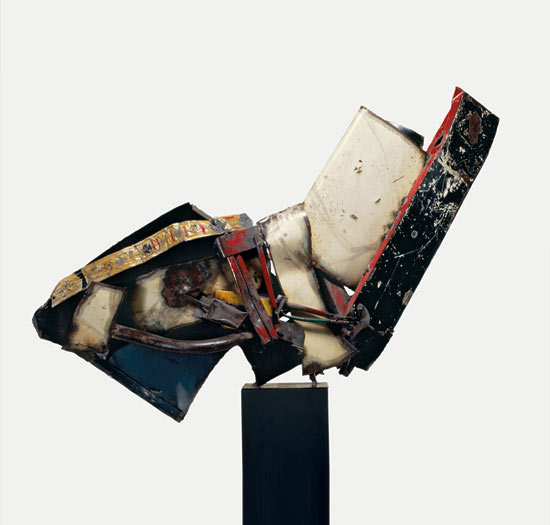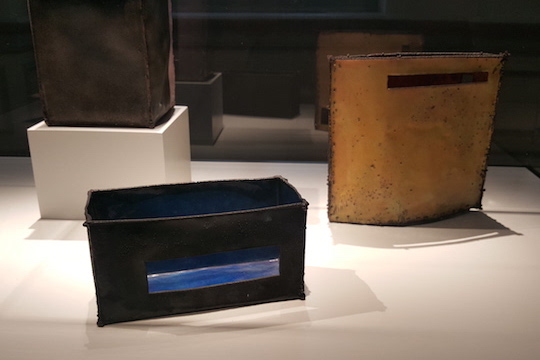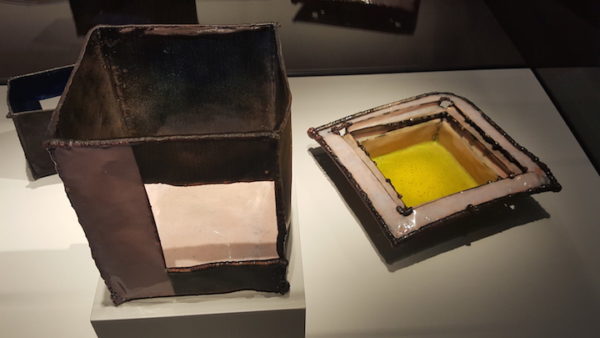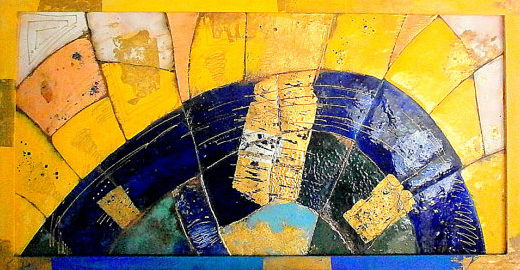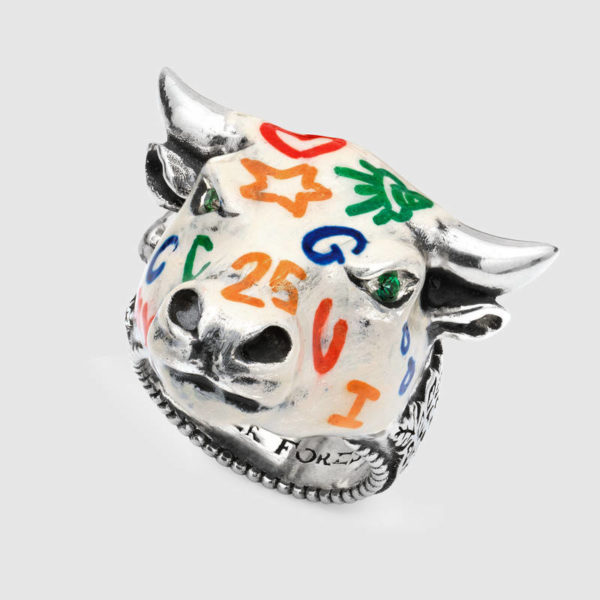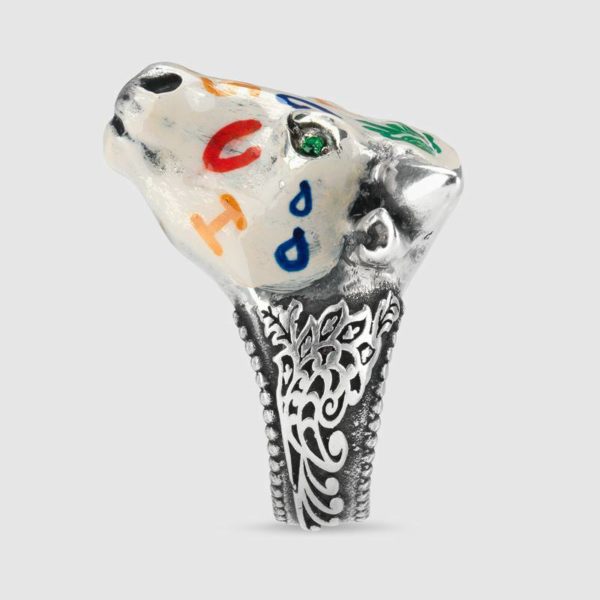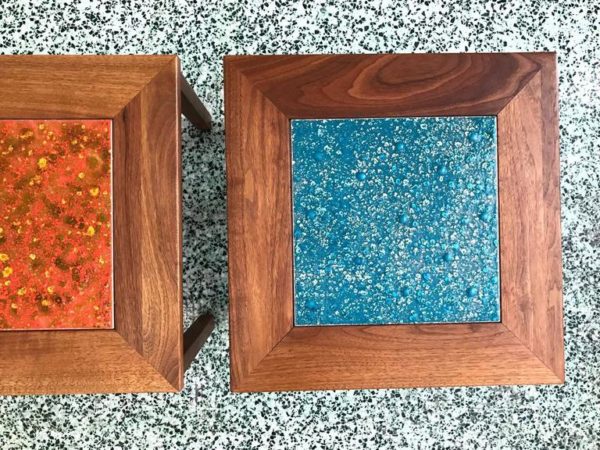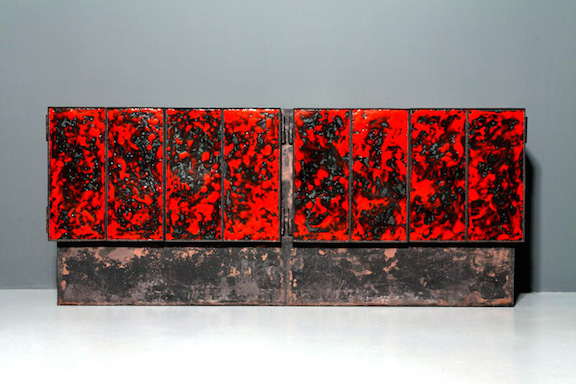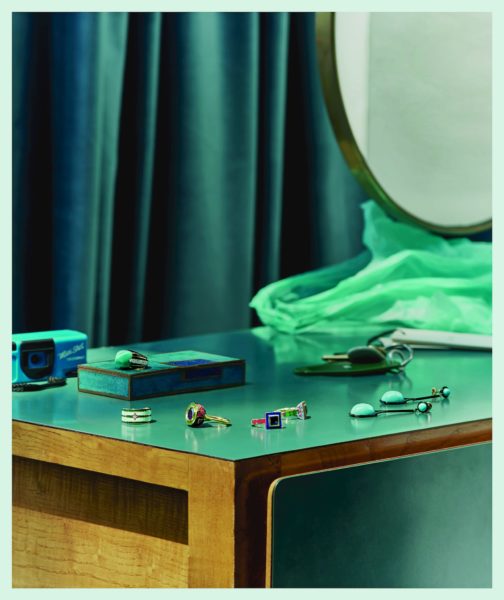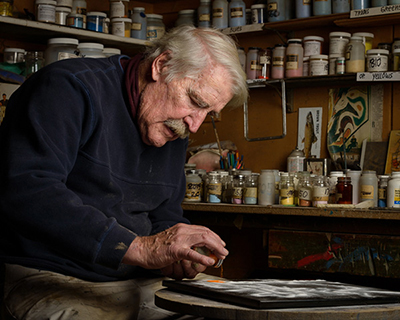
Balazs at work in his studio, 2002. Photo by Rajah Bose
With the death of Harold Balazs, a wonderful enamel artist who worked beautifully in many media, the art and craft community has lost not only a tremendous talent but a true friend. Balazs passed away on December 30, 2017, at the age of 89.
His career over the years was that of a resourceful, versatile, and multi-talented artist. Originally from Ohio, where as a child he encountered the work of enamel artist Edward Winter, he studied fine art at Washington State College, where his family moved in the 40s.
He earned a living with a combination of production work and commissions: enameled jewelry, architectural designs, public sculpture, posters, paintings and drawings. He left a legacy of public art throughout Spokane. His work can be found everywhere in the city, from churches to corporate headquarters.
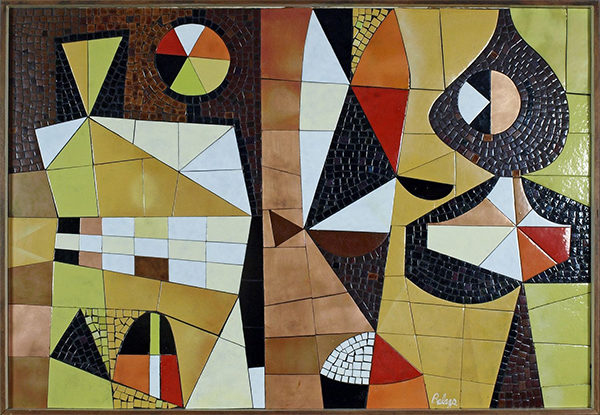
Large mosaic style panel, 1950s
But Balazs also left another, less visible legacy: He was an incredibly generous mentor to young artists, providing generations with encouragement and studio space. Center for Enamel Art founder, Judy Stone, was a close friend of Balazs.
“I met Harold in the early 90’s when I attended the Pacific Enameling Symposium in Seattle,” says Stone. “At the time I was feeling my way into a very established enamel community and was wondering how I could fit in and whether my work was any good. Based on Harold’s demeanor as he taught, created collaborations among students and answered questions, I decided to ask him if I could show him some of my work at the end of the symposium. I was scared, but felt Harold would do his best not to hurt my feelings. His critique was loving, constructive, and tremendously positive. From then on I considered Harold a mentor and a friend.”
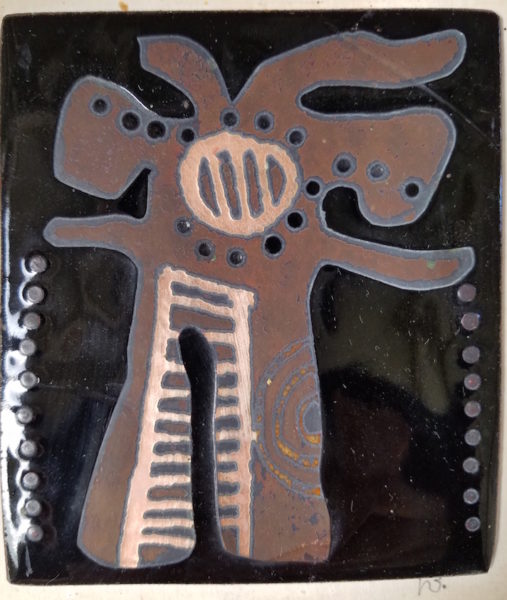
Balazs gave this piece to Center founder Judy Stone. Enamel on copper, 4″ x 4.5″
“In 2003, when I was co-coordinating the Enamelist Society Biennial conference ‘On the Edge’, we asked Harold to be our keynote speaker,” recalls Stone. “His keynote, like the man himself, was about matters much bigger than himself and enameling. He talked about art and craft education in K-12–which at the time was getting slashed from many school budgets–saying that art was as important to human development as breathing.”
Balazs was that rare breed of artist — dedicated to art as a process and a way of life, not just for himself but for others, too. Of the many beautiful works he left us, that may be his greatest. “To the very end,” says Stone, “Harold lived his life as someone who cared about others succeeding.”


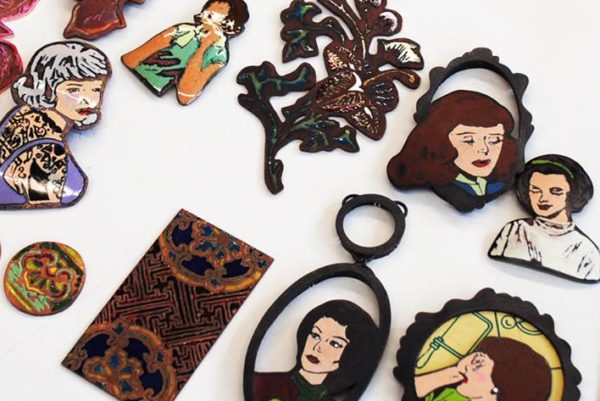
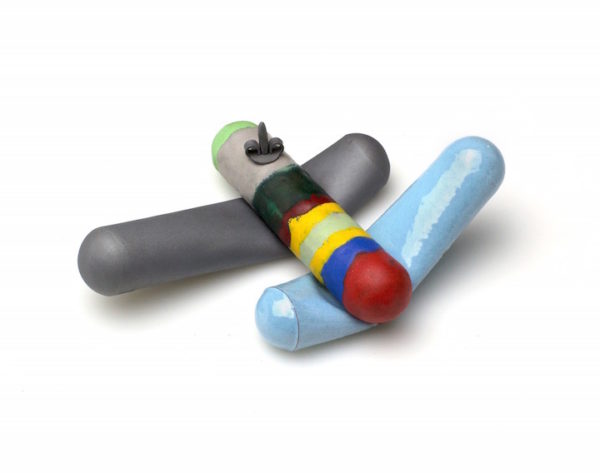
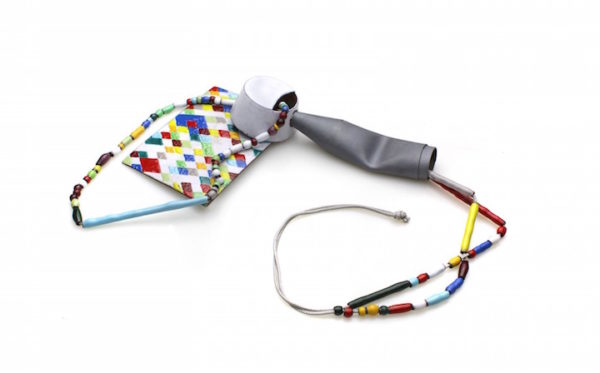
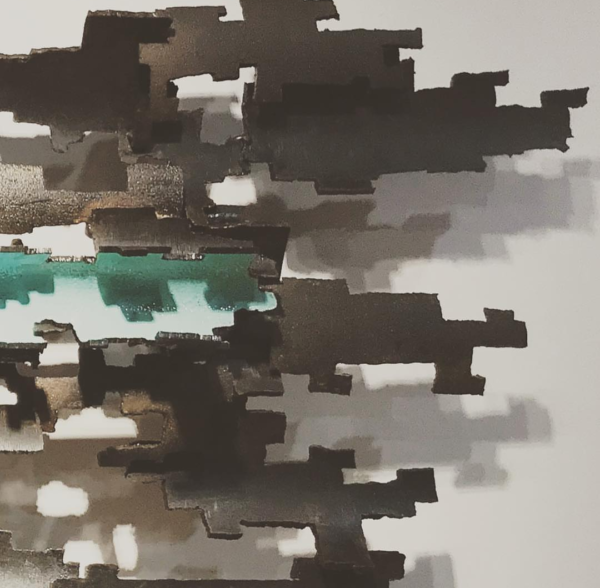
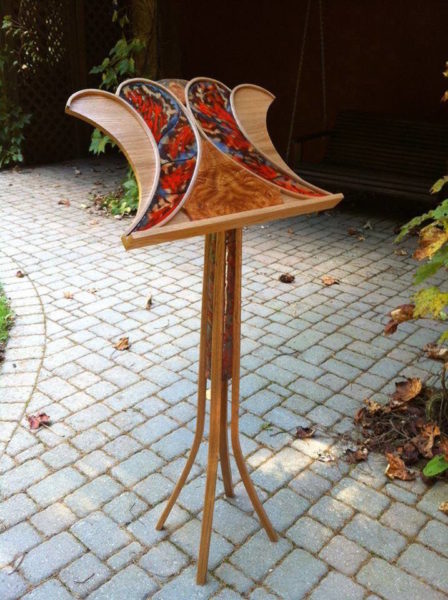
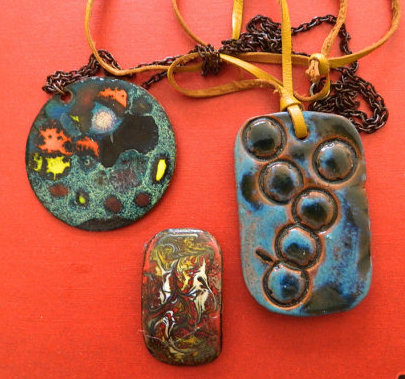 Quick: If I told you I’d bought an enameled pendant, what would come to mind? Something clumpy and heavy, with garish colors? Maybe a small, jewel-toned piece, carefully polished?
Quick: If I told you I’d bought an enameled pendant, what would come to mind? Something clumpy and heavy, with garish colors? Maybe a small, jewel-toned piece, carefully polished?
